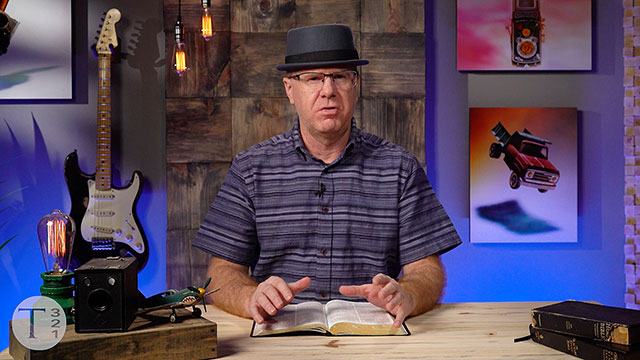Transfiguration of Jesus
Transfiguration of Jesus – The Revelation
The transfiguration of Jesus provides a glimpse of Jesus Christ’s deity. This revelation of His glory is recorded in The Synoptic Gospels (Matthew 17:1-3; Mark 9:2-13; Luke 9:28-36).1 One week before the Transfiguration, Peter shared his confession of Jesus as Messiah. Jesus would soon make His final departure from Galilee, about four months before His death. One of the purposes of the Transfiguration was to strengthen the faith of the disciples in the divine nature of Jesus before they experienced the shock of the difficult days ahead. Jesus longed for a presentation of His Heavenly Father’s divine magnificence and splendor in human form (John 17:24).

While on earth, Jesus appeared in His state of humility and affliction. Glimpses of His glory were displayed while maintaining unity with His human form/appearance. As Jesus prayed, He was "transfigured" (Mark 9:2). This means His countenance or facial appearance was changed. Jesus’ face shown like the sun. The substance of His body remained the same; He was not turned into spirit. His body which had appeared in weakness and dishonor, now appeared in power and glory (1 Corinthians 15:43). His clothes became white and glistening as the light.
At Jesus’ baptism, the Spirit of God came down on His Son in the form of a dove. The voice of God provided the authentication from heaven, “This is my Son, whom I love; with him I am well pleased.” In Matthew 17:5, God repeats these words. All three Persons of the Godhead—Father, Son, and Spirit—were revealed (Matthew 3:16-17). The Transfiguration again portrays God’s incarnate glory, as it was laid out in the Old Testament (Ezekiel 1:28; Ezekiel 10:4).
Transfiguration of Jesus – The Conversation
Prior to the Transfiguration of Jesus, He had spoken prophetically of His second coming when He, “the Son of Man is going to come in His Father’s glory with His angels…” (Matthew 16:27). As He spoke of His return, Jesus stated that some disciples would be permitted to view His coming kingdom before experiencing death. Peter, James, and his brother John—Jesus’ “inner circle” of disciples—were given a foretaste of the kingdom to come, while viewing Moses and Elijah appearing from heaven to converse with Jesus.
Moses’ and Elijah’s conversation with Jesus focused on His coming death. Moses was the giver of the Old Testament law. Elijah was one of the most noteworthy prophets of the Old Testament. When thinking of the Old Testament law, these two men held places of great prominence among Jews. The Jews acceptance of the relationship between Jesus’ death and the work of Moses and Elijah was crucial. Jesus’ death abolished the bonds of Old Testament laws and teachings (Colossians 2:14-17).
This divine conversation revealed Moses and Elijah not opposing cancellation of the written code, but freely discussing it with Jesus. This shows that Jesus' work was not a contradiction or a violation of what they had done, but rather a fulfillment of it, in complete harmony with God's plan as revealed through the Old Testament prophets. In addition to a revelation of His glory, the Transformation verified Jesus' death was part of God's will, purposed and understood long before it happened.
Transfiguration of Jesus – The Transformation
Transfiguration and transformation both come from the Greek verb metamorphoo, meaning “to change into another form.” Scripture makes only four references of this verb. As indicated earlier, Matthew 17:2 and Mark 9:2, bear reference to Jesus’ radiant appearance. On the road to Damascus, the apostle Paul encountered Jesus’ light which left him temporarily blind and permanently transformed as powerful instrument for God’s glory (Acts 9:3, 17-18). In Romans 12:2, Paul urges believers to “be transformed by the renewing of your mind.” Our attitudes, thoughts, feelings, and actions are affected by a control center, our mind. This transformation or renewal requires a total change from the inside out.
How are Jesus’ transfiguration and our transformation interwoven? Second Corinthians 3:18 refers to “metamophoo” when the apostle Paul speaks to the believers “…who with unveiled faces all reflect the Lord’s glory, [and] are being transformed into his likeness with ever-increasing glory, which comes from the Lord, who is the Spirit.” As with the disciples, God desires that we are transformed by an encounter with the One and Only.
The Transfiguration represents a focal point of God’s Kingdom—Christ fulfilling the Old Testament prophesies—the cross, resurrection, and His eternal glory. All God’s spiritual favors await those who place their trust in Jesus. Humanity was added to Christ’s deity, yet He became the radiant “light of men.” Jesus Christ, God’s Word made flesh, offers magnificent illumination and transformation to everyone (John 8:12).
1 Synoptic – The three gospels bear a resemblance in their structure, content, and wording. They describe events in Christ’s life from a similar point of view. In addition to these three accounts, John 1:14 and 2 Peter 1:17–18 also make reference to the Transfiguration.
What is your response?


